- News >
- Top 10 Most Visited Festivals Worldwide
Top 10 Most Visited Festivals Worldwide
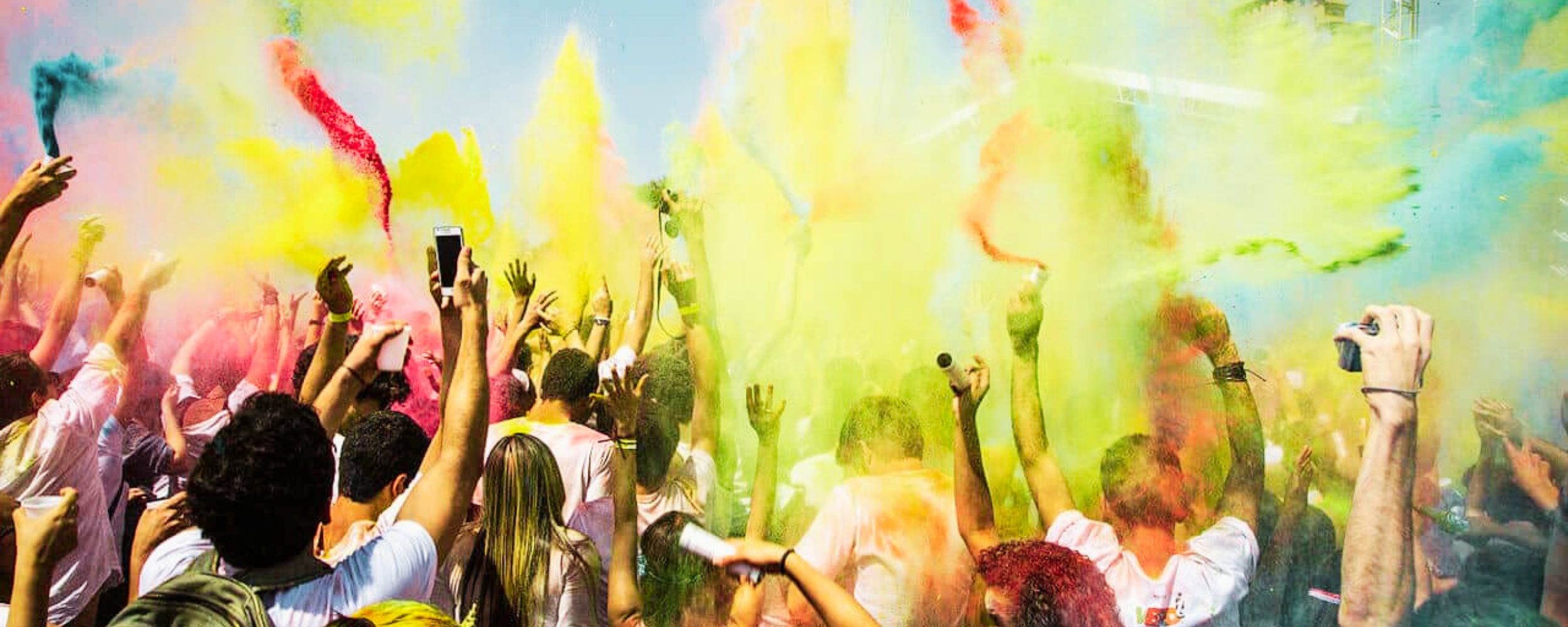
Festivals are a vibrant and integral part of cultures worldwide, offering an immersive experience for travellers seeking to celebrate, connect, and embrace the traditions of a destination. While countless festivals occur globally, there are ten standout events that draw massive crowds and captivate visitors with their unique charm, cultural significance, and unforgettable experiences.
|
RANK |
FESTIVAL |
LOCATION |
CULTURAL CONTEXT |
TRADITIONS |
EXPERIENCES TRAVELLERS CAN ANTICIPATE |
|
1. |
Carnaval. |
Rio de Janeiro, Brazil |
A celebration of the Christian period before Lent. |
People dress up in elaborate costumes and dance in the streets. |
Revelry, celebration, and street parties. |
|
2. |
Holi |
India |
A spring festival that celebrates the victory of good over evil |
People throw coloured powders and water at each other. |
A colourful and vibrant festival that is a celebration of life. |
|
3. |
Oktoberfest |
Munich, Germany |
A beer festival that takes place in Munich every year |
People drink beer, eat food, and celebrate. |
A large and lively festival that is a celebration of German culture and beer. |
|
4. |
Las Fallas |
Valencia, Spain |
A festival that takes place in Valencia in March. |
People build large effigies called "fallas" and then burn them in a huge bonfire. |
A colourful and noisy festival that is a celebration of the arrival of spring. |
|
5. |
Taj Mahal Mela |
Agra, India |
A festival that takes place in Agra in February. |
People celebrate the beauty of the Taj Mahal |
A cultural festival that is a celebration of one of the most beautiful buildings in the world. |
|
6. |
Cherry Blossom Festival |
Japan |
A festival that takes place in Japan in the springtime, when the cherry blossoms are in bloom. |
People enjoy the beauty of the cherry blossoms and celebrate the arrival of spring. |
A colourful and serene festival that is a celebration of the beauty of nature. |
|
7. |
Burning Man |
Black Rock City |
A festival that takes place in the Black Rock Desert in Nevada every year |
People build elaborate art installations and participate in a variety of activities. |
A unique and creative festival that is a celebration of self-expression and community. |
|
8. |
Diwani |
India |
A festival of lights that celebrates the victory of good over evil. |
People light diyas (small lamps) and celebrate the festival. |
A festive and family-friendly festival that is a celebration of light and hope. |
|
9. |
Songkran |
Thailand |
A water festival that takes place in Thailand in April. |
People throw water at each other and celebrate the new year. |
A fun and refreshing festival that is a celebration of the start of the new year. |
|
10. |
Fete de Gignac |
France |
A wine festival that takes place in Gignac, France, every year. |
People celebrate the local wine and enjoy the French countryside. |
A festive and relaxing festival that is a celebration of wine and French culture. |
1. Carnaval(Rio de Janeiro, Brazil)
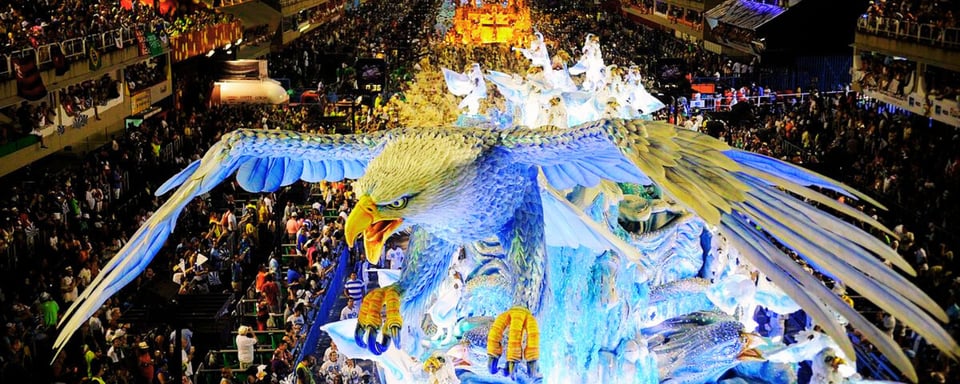
Carnaval in Rio de Janeiro, Brazil, is an iconic festival that showcases the vibrant culture and spirit of the country. It is a time of revelry and celebration, with people dressing up in elaborate costumes and dancing in the streets. The festival is a major tourist attraction, and it is estimated that over 2 million people attend each year.
-
Cultural Context
Carnaval in Rio de Janeiro is deeply connected to Brazil's history, traditions, and music. It originated in the 18th century and has evolved over time, incorporating elements from African, European, and indigenous cultures. The festival is a celebration of life, joy, and unity, reflecting the Brazilian ethos of embracing diversity and cultural fusion.
-
Traditions
Samba
Samba is the heartbeat of Carnaval. The festival features extravagant parades performed by samba schools, which are neighbourhood-based groups of performers, musicians, and dancers. Each samba school creates a unique theme and elaborate floats, costumes, and choreography to compete for the title of the best samba school. Samba is not just a dance but also a genre of music that combines African rhythms, Portuguese melodies, and Brazilian instruments.
Costumes and Floats
Elaborate costumes are an essential part of Carnaval. The samba dancers wear eye-catching, sequin-adorned costumes that reflect the theme of their samba school. The costumes are designed to be visually stunning, often featuring feathers, vibrant colours, and intricate detailing. Massive, intricately designed floats carry the dancers through the parade, adding to the grandeur of the event.
Street Parties ("Blocos")
In addition to the main parades, Carnaval in Rio de Janeiro also features countless street parties known as "blocos." These blocos are organised by local communities and attract thousands of people. They are characterised by live music, dancing, and a vibrant atmosphere. Travellers can join the blocos, immerse themselves in the lively street parties, and dance along with locals to the infectious rhythms of samba and other Brazilian genres.
-
Experiences
Parades
Attending the grand parades in the Sambadrome, a purpose-built stadium, is a must-do experience. Watching the samba schools showcase their elaborate floats, costumes, and synchronised performances is a feast for the senses. Travellers can witness the vibrant energy and creativity that goes into each samba school's presentation and immerse themselves in the electrifying atmosphere.
Samba Workshops
Many samba schools offer workshops where travellers can learn the basics of samba dancing. These workshops provide an opportunity to understand the artistry behind the dance, interact with local dancers, and even participate in the parades as part of a samba school.
Neighbourhood Immersion
Exploring the neighbourhoods of Rio de Janeiro during Carnival is an excellent way to experience the festival's local flavour. Each neighbourhood has its own unique blocos and street parties, allowing travellers to engage with the community, taste traditional food and drinks, and witness the spirit of Carnaval up close.
Cultural Insights
Beyond the festivities, Carnaval offers a chance to delve into the cultural fabric of Brazil. Travellers can visit samba schools, museums, and cultural centres to learn about the history, significance, and evolution of Carnaval and its role in Brazilian society.
2. Holi(India)
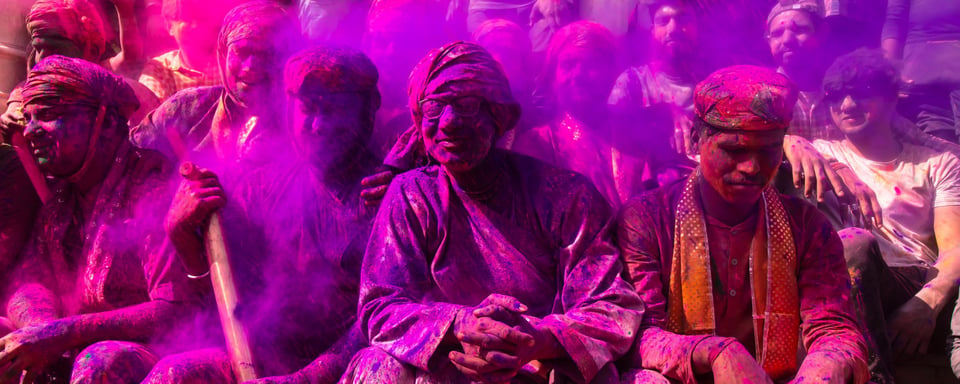
Holi (India) is a spring festival that celebrates the victory of good over evil. It is a time of colours, as people throw coloured powders and water at each other. The festival is a major tourist attraction, and it is estimated that over 100 million people attend each year.
-
Cultural Context
Holi has its roots in ancient Hindu mythology, specifically in the legends of Lord Krishna. The festival is associated with various stories, including the divine love between Lord Krishna and Radha, the victory of Prahlada over the demon Holika, and the playful pranks played by Krishna and his friends. Holi is celebrated throughout India and has regional variations in rituals and customs, but the spirit of joy and togetherness remains constant across the country.
-
Traditions
Holika Dahan
The festival begins with Holika Dahan, a bonfire lighting ceremony held on the evening before the main day of Holi. People gather around a bonfire and offer prayers while symbolically burning an effigy representing Holika, the demoness. This ritual signifies the victory of good over evil.
Playing with Colors
The main day of Holi is known as Rangwali Holi, when people come together to play with colours. Participants throw and apply vibrant coloured powders and water on each other, resulting in a colourful and joyful atmosphere. The colours represent the arrival of spring, the blossoming of flowers, and the celebration of life.
Pichkaris and Water Balloons
Water is an integral part of Holi celebrations, and people use pichkaris (water guns) and throw water-filled balloons at each other. It adds an element of fun and playfulness to the festivities, as everyone indulges in friendly water fights.
Traditional Music and Dance
Traditional music, especially the rhythm of drums, plays a significant role in Holi celebrations. People gather in open spaces and dance to the beats of dhol (drum) and sing folk songs. The music and dance performances add to the festive spirit and create an enchanting atmosphere.
-
Experiences
Colourful Celebrations
Travellers can participate in the exuberant and vibrant celebrations of Holi by joining locals in throwing colours, dancing, and enjoying the festive atmosphere. It's a time to let loose, embrace the playful spirit, and connect with people from diverse backgrounds.
Community Participation
Holi is celebrated as a community festival, with families, friends, and neighbours coming together to rejoice. Travellers can engage with local communities, visit temples, and join in the celebrations to experience the warmth, hospitality, and unity that Holi brings.
Traditional Delicacies
Holi is also a time for indulging in delicious traditional sweets and snacks. Travellers can savour festive delights like gujiya (sweet dumplings), thandai (a special drink made with milk, nuts, and spices), and other regional specialties. Exploring the local cuisine during Holi adds a culinary dimension to the overall experience.
Cultural Insights
Holi offers a window into Indian culture and traditions. Travellers can learn about the legends associated with the festival, witness the customs and rituals, and gain insights into the significance of Holi in Indian society.
3. Oktoberfest(munich, Germany)
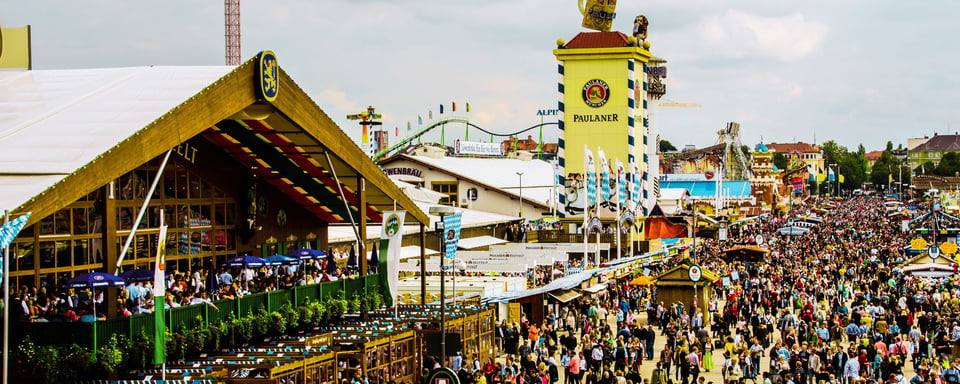
Oktoberfest is an internationally renowned beer festival held annually in Munich, Germany. It is one of the world's largest festivals and attracts millions of visitors from around the globe. Oktoberfest originated in 1810 as a celebration of the Bavarian Crown Prince Ludwig's marriage to Princess Therese von Sachsen-Hildburghausen. Today, it has evolved into a cultural extravaganza that showcases Bavarian traditions, beer, and hospitality.
-
Cultural Context
Oktoberfest is deeply rooted in Bavarian culture, known for its rich traditions and love for beer. The festival reflects the Bavarian sense of community, togetherness, and Gemütlichkeit (a feeling of warmth and cosiness). It offers an opportunity to experience the unique charm and hospitality of the region.
-
Traditions
Beer Tents
The heart of Oktoberfest lies in the massive beer tents set up on the festival grounds. These tents are owned by Munich's renowned breweries and can accommodate thousands of people. Each tent has its distinct atmosphere and music, providing a range of experiences for visitors. It's essential to note that reservations are often required for larger tents, so planning ahead is recommended.
Opening Ceremony and Tapping of the First Barrel
Oktoberfest officially begins with an opening ceremony where the mayor of Munich taps the first beer barrel, exclaiming "O'zapft is!" (meaning "It's tapped!"). This symbolic act signals the start of the festival and is followed by parades, music, and merriment.
Traditional Bavarian Clothing
Many locals and visitors embrace Bavarian traditional clothing during Oktoberfest. Men often wear lederhosen, which are leather shorts, paired with traditional shirts and knee-high socks. Women commonly dress in dirndls, which consist of a bodice, blouse, skirt, and an apron. Wearing these outfits adds to the festive ambiance and cultural immersion.
Bavarian Cuisine
Oktoberfest offers a chance to indulge in Bavarian cuisine. Visitors can savor hearty specialties such as pretzels, sausages, roasted chicken, sauerkraut, and traditional Bavarian pastries like apple strudel and Bavarian cream. The festival is an excellent opportunity to sample regional delicacies and culinary traditions.
-
Experiences
Beer Garden Atmosphere
Oktoberfest provides a lively and convivial atmosphere within the beer tents and beer gardens. Travellers can mingle with locals and fellow visitors, enjoy the live music performed by traditional Bavarian bands, and raise their steins (large beer mugs) in cheerful toasts of "Prost!" (meaning "Cheers!"). It's an opportunity to immerse oneself in the contagious enthusiasm and camaraderie.
Beer Sampling
Oktoberfest is renowned for its beer. Travellers can indulge in a wide variety of Bavarian beers, particularly Märzen, a traditional Oktoberfest beer. Each brewery has its own unique brew, and trying different beers is part of the experience. It's worth noting that beer is served in large steins, so pace yourself and drink responsibly.
Traditional Music and Folk Dancing
The festival showcases traditional Bavarian music and dance performances. Travellers can enjoy live music played on brass instruments, including accordions, tubas, and trumpets. The lively melodies and energetic folk dances like the Schuhplattler create an atmosphere filled with merriment and entertainment.
Fun Fair Rides and Attractions
Oktoberfest features a vast fun fair adjacent to the beer tents. Visitors can enjoy thrilling rides, such as roller coasters and Ferris wheels, and explore various attractions like games, haunted houses, and souvenir shops. The fair adds an element of amusement and excitement to the overall Oktoberfest experience.
4. Las Fallas(Valencia, Spain)
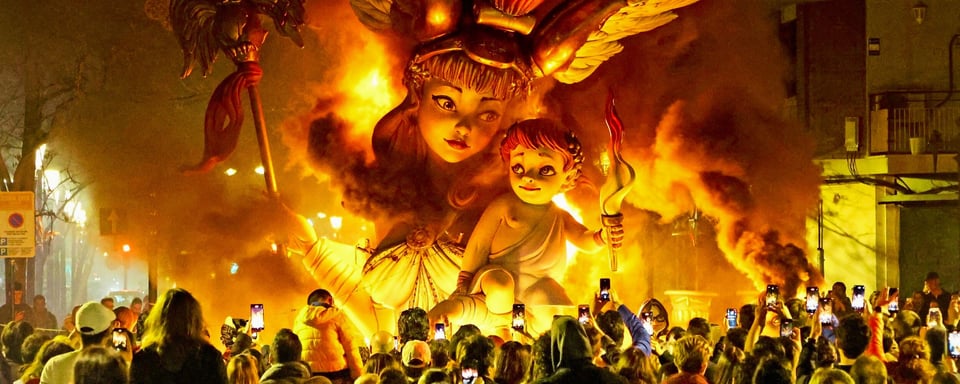
Las Fallas (Valencia, Spain) is a festival that takes place in Valencia in March. It is a time of fire, as people build large effigies called "fallas" and then burn them in a huge bonfire. The festival is a major tourist attraction, and it is estimated that over 2 million people attend each year.
-
Cultural Context
Las Fallas has its origins in pagan celebrations marking the arrival of spring. Over time, it evolved into a festival associated with Saint Joseph, the patron saint of carpenters. The festival's name "fallas" refers to the elaborate sculptures or "fallas" made of papier-mâché,wood, and other materials. Las Fallas is considered an expression of Valencian identity, artistry, and community spirit.
-
Traditions
Fallas Monuments
The centrepiece of Las Fallas is the creation of intricate and colossal fallas monuments. These sculptures, often satirical or political in nature, are placed in streets and squares throughout the city. They depict a wide range of themes, caricatures, and current events, showcasing the artistry and creativity of the falleros (artists who create the fallas). The fallas can reach several stories in height and are accompanied by detailed and witty scenes.
Mascletà
One of the highlights of Las Fallas is the daily mascletà, a thunderous and rhythmic fireworks display accompanied by loud explosions. It takes place in Plaza del Ayuntamiento and creates an intense auditory experience that reverberates through the city. The mascletà represents the fusion of artistry and pyrotechnics, adding excitement and a sense of anticipation to the festival.
Flower Offerings
On March 17th and 18th, thousands of falleros and falleras (participants in Las Fallas) dress in traditional Valencian attire and offer flowers to the Virgin Mary. They form a colourful procession that brings a fragrant and beautiful tribute to the city's patroness. The flowers are used to create an enormous wooden structure called the manto (cloak), which is adorned with the floral offerings.
-
Experiences
Exploring Fallas Exhibitions
Travellers can wander through the streets of Valencia, exploring the fallas monuments scattered throughout the city. Each falla tells a unique story or message, providing an opportunity to engage with the artistry, humour, and social commentary of the falleros. It's a chance to appreciate the immense creativity and craftsmanship behind these temporary works of art.
Witnessing the Mascletà
Attending the daily mascletà in Plaza del Ayuntamiento is an intense and thrilling experience. Travellers can join the crowd, feel the vibrations from the explosions, and immerse themselves in the sensory spectacle of sound and light. The mascletà is a testament to the Valencian love for pyrotechnics and their skill in orchestrating dramatic fireworks displays.
Participating in Street Festivities
Las Fallas brings the streets of Valencia to life with processions, music, dancing, and traditional costumes. Travelers can join in the lively street parties, watch traditional folk dances like the jota, and savor traditional Valencian cuisine. The festive atmosphere is contagious, and it's an opportunity to connect with locals and experience the Valencian sense of community.
Night of Fire
On the final night of Las Fallas, March 19th, the festival reaches its grand finale with the "Nit de Foc" (Night of Fire). It is a breathtaking fireworks display that illuminates the city's sky, creating a stunning visual spectacle. Travellers can find vantage points throughout Valencia to witness this awe-inspiring pyrotechnic show and bid farewell to Las Fallas in a blaze of glory.
5. Taj Mahal Mela(Agra, India)
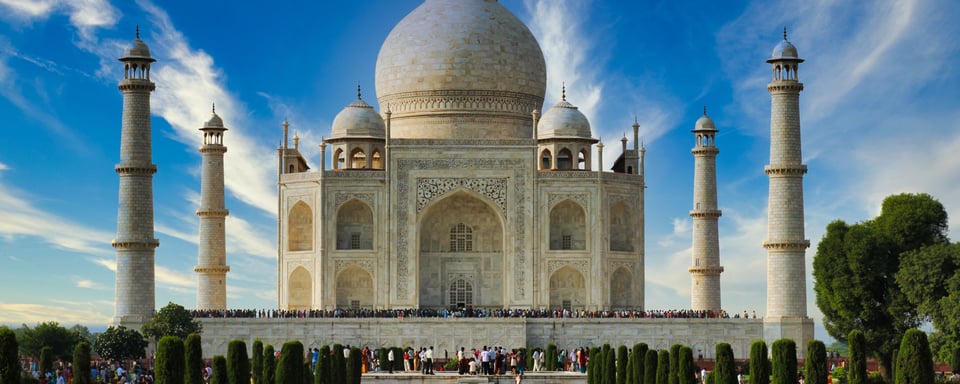
Taj Mahal Mela (Agra, India) is a festival that takes place in Agra in February. It is a time to celebrate the beauty of the Taj Mahal. The festival includes cultural performances, food stalls, and boat rides on the Yamuna River. The festival is a major tourist attraction, and it is estimated that over 1 million people attend each year.
Taj Mahotsav
Taj Mahotsav is an annual ten-day cultural festival held in Agra. It is a celebration of the region's arts, crafts, music, dance, and culinary traditions. The festival provides a platform for local artisans and performers to showcase their talents and for visitors to appreciate the cultural diversity of the region.
Urs of Sheikh Salim Chishti
This is an important Islamic festival celebrated at the tomb of Sufi saint Sheikh Salim Chishti in Fatehpur Sikri, near Agra. Devotees from different parts of the country gather to pay homage to the saint and seek blessings. The festival features Sufi music, qawwali performances, and prayers.
Holi
Like in many parts of India, Holi, the festival of colours, is celebrated with enthusiasm in Agra. People come together to play with coloured powders and water, enjoy festive meals, and celebrate the arrival of spring.
Diwali
Diwali, the Festival of Lights, is celebrated with great fervour in Agra. The city is adorned with decorative lights, and families come together to light oil lamps, exchange gifts, and enjoy fireworks. Diwali in Agra offers an opportunity to witness the joyous celebrations and experience the cultural traditions associated with the festival.
6. Cherry Blossom Festival(Japan)
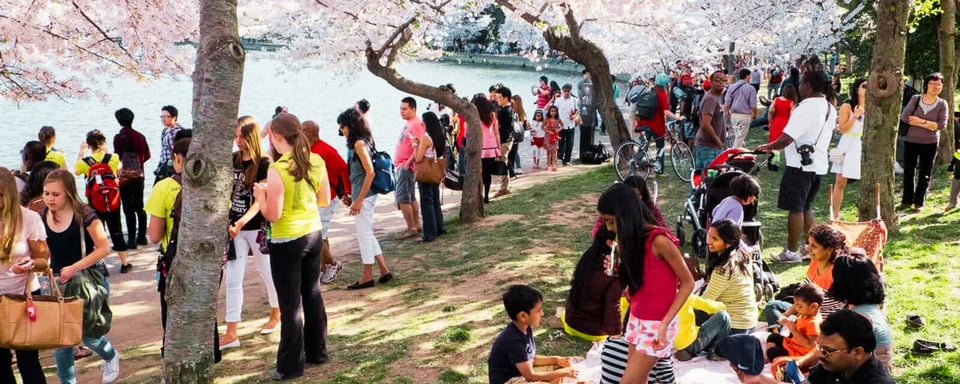
Cherry Blossom Festival in Japan. It is a festival that takes place in Japan in the springtime, when the cherry blossoms are in bloom. The festival is a time to enjoy the beauty of the cherry blossoms and to celebrate the arrival of spring. The festival is a major tourist attraction, and it is estimated that over 10 million people attend each year.
-
Cultural Context
Cherry blossoms have a profound presence in Japanese culture, symbolising the ephemeral beauty and transience of life. The arrival of cherry blossoms in spring is a cherished natural phenomenon that inspires poetry, art, and contemplation. The festival provides an opportunity for people to appreciate and celebrate the beauty of the blossoms, and to gather with friends, family, and colleagues for shared moments of joy and reflection.
-
Traditions
Hanami Parties
Hanami involves gathering under cherry blossom trees to enjoy the beauty of the blossoms and to celebrate. People spread picnic blankets, enjoy food and drinks, and socialise with friends and loved ones. Hanami parties can take place in parks, temple grounds, or along riversides where cherry trees are in full bloom. It's a time for relaxation, appreciation, and the joyous arrival of spring.
Sakura Viewing
Sakura viewing, or "yozakura," refers to the tradition of admiring cherry blossoms illuminated at night. Many parks and gardens showcase nighttime illuminations, where the cherry blossoms are lit up, creating a magical and ethereal atmosphere. Travellers can experience the enchantment of walking under the illuminated sakura trees, capturing stunning photographs, and savouring the tranquillity of the surroundings.
Traditional Performances
Some Cherry Blossom Festivals feature traditional Japanese performances, such as tea ceremonies, music concerts, and dance performances. These cultural presentations provide a deeper understanding of Japanese traditions and offer a glimpse into the country's artistic heritage.
-
Experiences
Cherry Blossom Viewing
The main experience of the Cherry Blossom Festival is witnessing the breathtaking beauty of the cherry blossoms in full bloom. Travellers can visit famous hanami spots such as Ueno Park and Shinjuku Gyoen in Tokyo, Maruyama Park in Kyoto, or Philosopher's Path in Kyoto to immerse themselves in the sea of delicate pink and white petals. Strolling through avenues lined with cherry trees and capturing the picturesque scenes is a truly unforgettable experience.
Cultural Immersion
The Cherry Blossom Festival provides an opportunity to immerse oneself in Japanese culture and customs. Travellers can engage with locals during hanami parties, participate in traditional activities like tea ceremonies, and try seasonal sakura-flavoured treats and beverages.
Photography Opportunities
For photography enthusiasts, the festival offers countless opportunities to capture stunning images. The soft hues of the cherry blossoms against various backdrops, such as ancient temples, picturesque gardens, and urban landscapes, provide a visually captivating experience.
Nature Walks and Outdoor Activities
Apart from enjoying the cherry blossoms, travellers can explore the surrounding natural beauty and engage in outdoor activities. Many parks offer walking trails, cycling paths, and boating options, allowing visitors to appreciate the blossoms while enjoying the refreshing ambiance of spring.
7. Burning Man(Black Rock City)
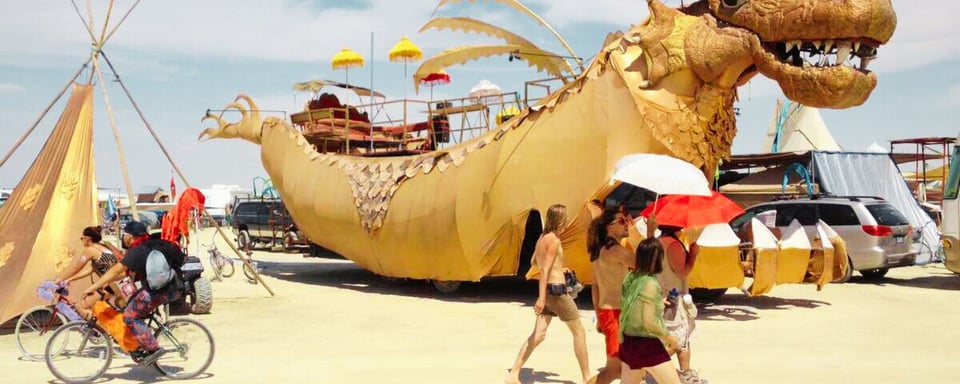
Burning Man in Black Rock City, Nevada, United States. It is a festival that takes place in the Black Rock Desert in Nevada every year. It is a time of self-expression and creativity, as people build elaborate art installations and participate in a variety of activities. The festival is a major tourist attraction, and it is estimated that over 70,000 people attend each year.
-
Cultural Context
Burning Man emerged in the late 1980s as a gathering of like-minded individuals celebrating art, self-expression, and community. The event is guided by ten core principles, including radical inclusion, self-reliance, self-expression, and communal effort. It aims to create an environment where participants can express themselves freely, embrace creativity, and build a temporary community based on shared values.
-
Traditions
Temporary City Construction
Participants gather to create Black Rock City, a temporary city that emerges in the Nevada desert during the event. The city's layout includes various themed camps, art installations, and community spaces, all organised by participants. The creation of Black Rock City fosters a sense of communal effort and participation.
Art Installations
Burning Man is renowned for its large-scale, interactive art installations. These artworks range from sculptures and structures to immersive experiences and interactive performances. Participants are encouraged to engage with the art, often incorporating it into their self-expression and creative experiences.
Radical Self-Expression
One of the core principles of Burning Man is radical self-expression. Participants are encouraged to express themselves freely through art, costumes, performances, workshops, and personal interactions. This culture of self-expression fosters a sense of individuality, creativity, and inclusiveness.
-
Experiences
Artistic Exploration
Travellers can explore the vast array of art installations spread across Black Rock City. They can engage with interactive sculptures, witness live performances, and participate in workshops and artistic collaborations. Burning Man offers an immersive experience where visitors can interact with the art and creativity that permeates the event.
Community and Radical Inclusion
Burning Man emphasises the creation of a temporary community that encourages inclusiveness and connection. Travellers can participate in community activities, engage in conversations with fellow participants, and contribute to the collective experience of the event. The sense of belonging and camaraderie at Burning Man is a unique and powerful aspect of the experience.
Mutant Vehicles and Theme Camps
Burning Man features an array of mutant vehicles, which are creatively designed, often art-covered vehicles that traverse the city. Travellers can hop on these mobile art installations, which act as transportation and interactive spaces. Additionally, theme camps provide unique experiences such as workshops, performances, and communal spaces centred around specific themes or activities.
Rituals and Burning of the Man
The event culminates with the symbolic burning of a large wooden effigy known as "The Man." This ritualistic burning is a central spectacle of Burning Man and represents the temporary nature of the community and the embrace of change and transformation. Travellers can witness this awe-inspiring event, which includes music, performances, and a collective sense of celebration.
It's important to note that attending Burning Man requires pre-planning, purchasing tickets, and adhering to the event's principles and guidelines. The experience at Burning Man is highly individualistic, with participants having the freedom to shape their own journey and engage with the event as they see fit.
Burning Man offers a unique and transformative experience for travellers, promoting artistic expression, self-discovery, and community engagement. It provides a temporary world where participants can break free from societal norms, embrace their creativity, and connect with others in an environment that encourages self-expression and radical inclusivity.
8. Diwali (India)
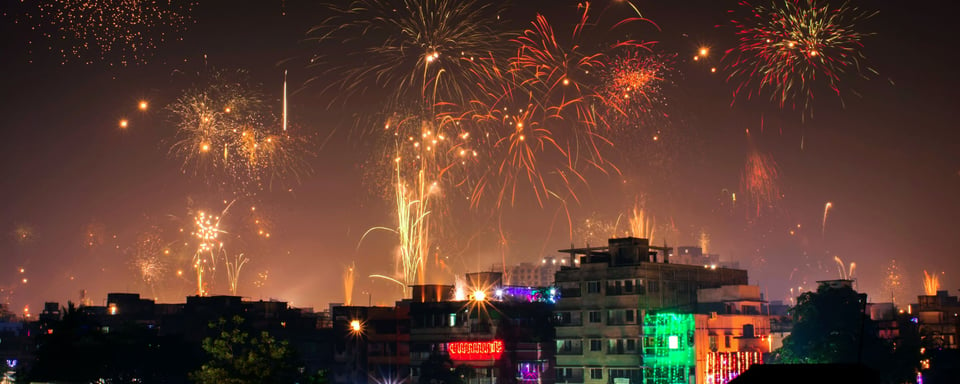
Diwali in India. It is a festival of lights that celebrates the victory of good over evil. It is a time for family and friends, as people gather to light diyas (small lamps) and celebrate the festival. The festival is a major tourist attraction, and it is estimated that over 300 million people attend each year.
Diwali is a festival that takes place in the Indian state of Rajasthan. It is a celebration of the culture and traditions of the Rajasthani people. The festival takes place in the month of December, and it is a time for people to come together to celebrate their shared heritage.
The cultural context of Diwali is rich and diverse. The Rajasthani people are a mix of different cultures, including Hindu, Muslim, and Jain. This diversity is reflected in the festival, which features a variety of cultural performances, including music, dance, and theatre.
The traditions of Diwali are also rich and varied. One of the most popular traditions is the Mehandi ceremony, in which women have their hands and feet decorated with henna. Another popular tradition is the Gair dance, which is a traditional Rajasthani folk dance.
Travellers can anticipate a variety of experiences at Diwali. They can enjoy the cultural performances, participate in the traditional dances, and learn about the Rajasthani culture. They can also meet new people and make new friends.
9. Songkran(Thailand)
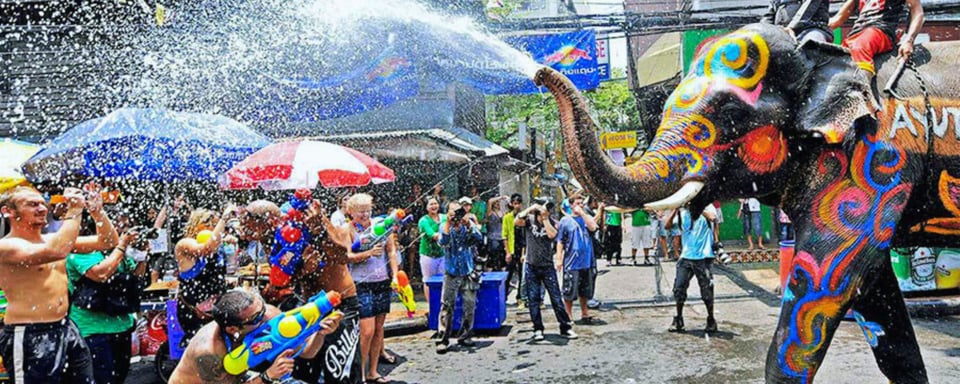
Songkran is a traditional Thai New Year festival celebrated with great enthusiasm throughout Thailand. It marks the beginning of the Thai solar calendar and is known for its exuberant water fights and water-related festivities. Songkran is deeply rooted in Thai culture and Buddhism, symbolising the washing away of the old year's misfortunes and welcoming the new year with a fresh start.
-
Cultural Context
Songkran has its roots in ancient agricultural traditions and is deeply intertwined with Buddhism in Thailand. It is a time for family reunions, paying respects to ancestors, and seeking blessings from elders. The festival is marked by various rituals, acts of merit, and the practice of "Rod Nam Dum Hua" – the pouring of scented water on the hands of revered monks and elders as a sign of purification and respect.
-
Traditions
Water Festival: Songkran is widely known for its water fights and playful water-based activities. People of all ages take to the streets armed with water guns, buckets, and hoses, engaging in friendly water battles with friends, family, and strangers. The water represents purification, cleansing, and the washing away of past sins and misfortunes.
Traditional Ceremonies: Songkran is a time for religious rituals and visits to temples. People make merit by offering food to monks, participating in almsgiving ceremonies, and engaging in prayer and meditation. Many families also create sand pagodas or "chedis" at temples and their homes, symbolising the Buddha's teachings and the impermanence of life.
Cultural Performances: During Songkran, travellers can experience traditional Thai dance and music performances, as well as enjoy beauty pageants, parades, and cultural shows that showcase the rich heritage of Thailand. These performances often depict scenes from Thai mythology, historical events, and local folklore.
-
Experiences
Water Splashing Fun
Travellers can join in the lively water fights and engage in playful splashing with locals and fellow visitors. From small water fights on the streets to massive water battles at designated zones, the festive atmosphere and water-based celebrations create a sense of unity and joy.
Temple Visits and Blessings
Exploring temples during Songkran offers an opportunity to witness and participate in traditional rituals. Travellers can observe monks performing ceremonies, make offerings, and receive blessings from monks and respected elders. Visiting temples during this time provides insights into Thai Buddhism and spiritual practices.
Cultural Exchange
Songkran is a time when Thai communities welcome visitors with open arms. Travellers can experience the warm Thai hospitality, immerse themselves in local traditions, and learn about Thai customs and beliefs. Engaging in conversations, sharing meals, and participating in community events allows for cultural exchange and meaningful connections.
Traditional Food and Festive Delicacies
Songkran is an occasion to savour traditional Thai dishes and festive delicacies. Travellers can indulge in popular treats like "khao chae" (rice soaked in jasmine-scented water), "kanom krok" (coconut rice pancakes), and various Thai desserts. Exploring local markets and food stalls during Songkran provides a culinary adventure that complements the festive celebrations.
10. Fête de Gignac(France)
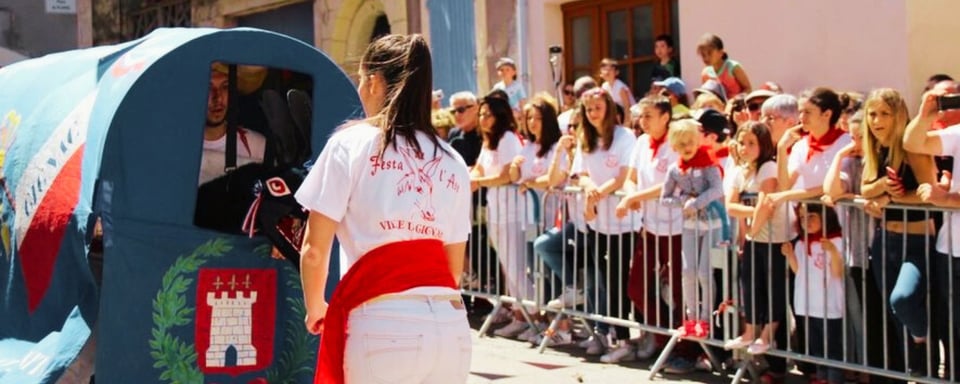
Fete de Gignac in Gignac, France. It is a wine festival that takes place in Gignac, France, every year. It is a time to celebrate the local wine and to enjoy the French countryside. The festival is a major tourist attraction, and it is estimated that over 100,000 people attend each year.
-
Cultural context
Fête de Gignac is a wine festival that takes place in the town of Gignac, in the Hérault department of southern France. The festival is a celebration of the local wine, and it is a major tourist attraction. The festival takes place over a weekend in late September or early October, and it is a time for people to come together to celebrate their shared love of wine.
-
Traditions
The traditions of Fête de Gignac include wine tastings, food stalls, live music, and dancing. There are also a variety of activities for children, such as face painting and bouncy castles. The festival is a great opportunity to learn about the local wine and to experience the French countryside.
-
Experiences travellers can anticipate
Travellers can anticipate a variety of experiences at Fête de Gignac. They can enjoy the wine tastings, sample the local food, and listen to live music. They can also participate in the activities for children or simply relax and enjoy the atmosphere.
These top 10 most visited festivals worldwide offer travellers an extraordinary opportunity to witness the vibrant tapestry of global cultures, immerse themselves in age-old traditions, and create lasting memories. Whether it's the lively parades of Rio's Carnival, the jubilant atmosphere of Oktoberfest in Munich, or the spiritual ambiance of India's Diwali, these festivals provide a window into the rich heritage and collective spirit of communities around the world. By participating in these global celebrations, travellers can embrace the power of cultural exchange and create a deeper connection with the destinations they visit.
